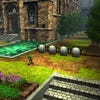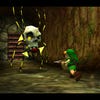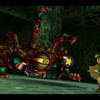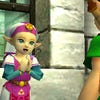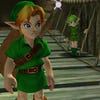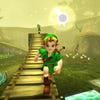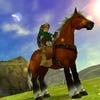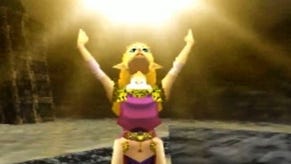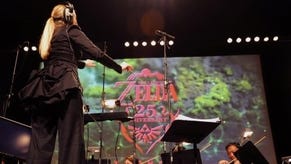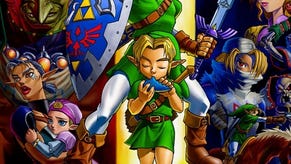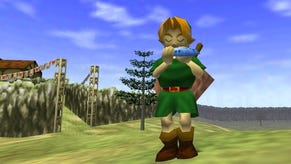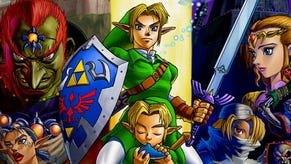The Legend of Zelda: Ocarina of Time 3D
Remaster Sword.
Ocarina of Time relies heavily on your intuition and curiosity, two qualities that I personally feel have atrophied over the past decade as games have become increasingly terrified to let you work anything out for yourself. Ocarina needs you to ask questions of the world around you - What's over there? Why is this chicken here? What does this symbol mean? How do I get up there? - if you want to progress at all, let alone find all its secrets.
It's a wonderful thing, but as a result it's relatively easy to get lost or stuck, even if you've played it before. The modern answer to this is the inclusion of Shiekah Stones, giant Gossip Stones that appear in the Temple of Time and other start points. (There's still no autosave; turn the game off and you'll resume at the start of whichever dungeon you're exploring, in little Link's treehouse, or in the Temple. Instead of saving and quitting, it's much more convenient to close the 3DS lid.)
These offer video clips that show you where to go next, or illustrate the answers to tricky puzzles, usually stopping short of simply showing you the solution. It's an elegant way to offer help without forcing it down your throat, cutting out unnecessary hours of exploration. But often, getting lost is a pleasure in itself.
That's another thing that has been largely forgotten since Ocarina of Time first came out: the joy of traversal. If you want to go somewhere in Ocarina's Hyrule, you have to walk there on your own two feet or ride there with Epona as the sun rises and sets, with no fast-travel, no helpful narrative segue that conveniently deposits you exactly where you need to be. You're supposed to wonder, and to wander. You're invariably rewarded for it.
This lack of intrusion from cut-scenes and incessant objective-marking is what makes Hyrule feel like a place. That sense of immersion is even more striking now than it was in 1998, and the 3D effect certainly adds to it - with all the advancements that we've made, there are still so few games that really feel like worlds.
Playing the whole game through again, there's no one moment that defines Ocarina of Time. There are too many: playing ocarina songs to frogs outside Zora's Domain; Link's expression as he wonders at his suddenly adult body after pulling the Master Sword from the stone; those first steps into the catastrophically changed Hyrule; dancing with Gorons, jumping the fence with Epona, the underground cow, exploring beneath Kakariko Village's graveyard, the entirety of the Spirit Temple.
If you've played it before, there are so many of these moments that you'll have forgotten, and seeing them like this is a wonderful and really quite emotional experience. It's the realisation of a long-held dream. If you haven't – well, I'm deeply envious.
Great art means different things to you at different points in your life. Ocarina of Time means something different to me now than it did 13 years ago. But the fact that it still has so much meaning is an affirmation of something I've long suspected: that this game is one of the greatest things that video games have ever achieved.

